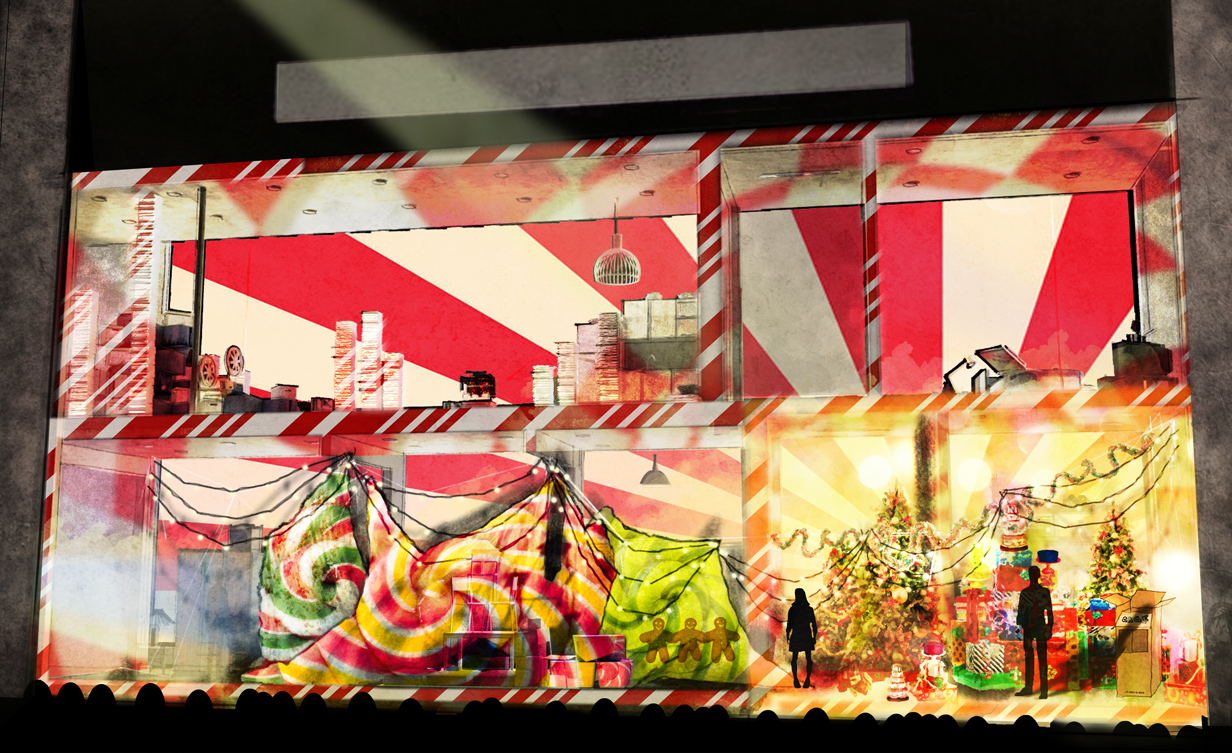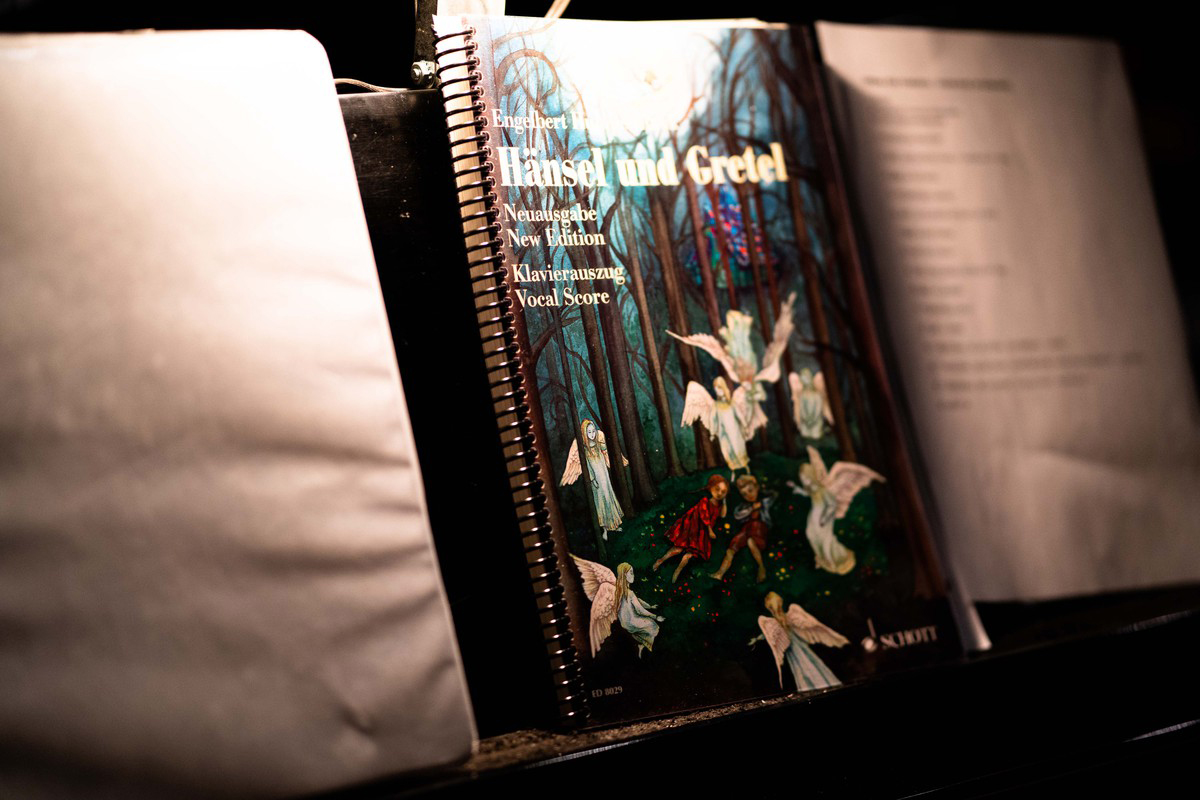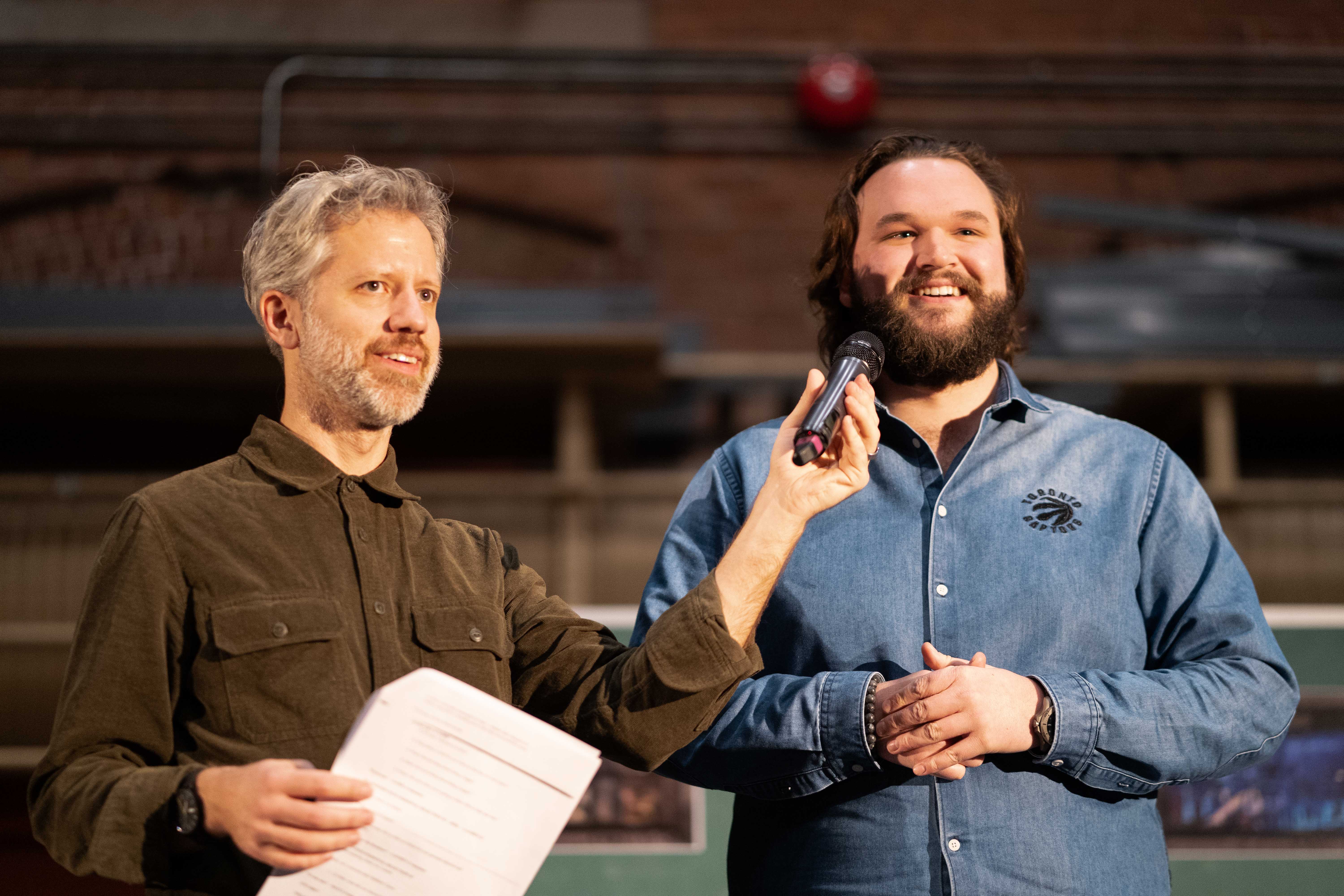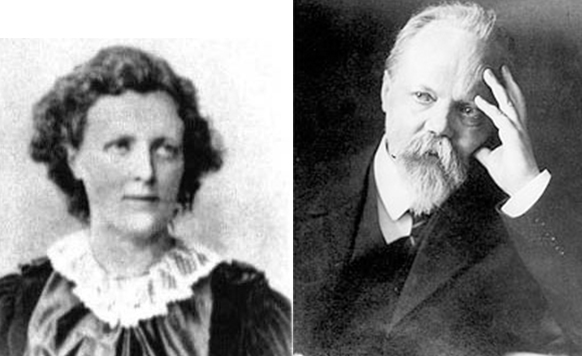
Set concept illustration by S. Katy Tucker
HANSEL & GRETEL IN A NUTSHELL
A Family Favourite Real-life siblings, Engelbert Humperdinck and Adelheid Wette, created the opera based on a series of songs written for Adelheid’s children to perform around Christmas, and it remains a holiday classic today.
A Fairytale for Toronto. Today. Joel Ivany, one of Canada’s most inventive directors, gives
Hansel & Gretel’s timeless themes a contemporary twist, setting the action in modern-day Toronto.
Spellbinding Digital Effects Cutting-edge projection technology transforms an everyday urban setting into something magical, transporting us into the minds of Hansel and Gretel and sparking the imagination in all of us.
GRIMM BEGINNINGS
(l-r) Librettist Adelheid Wette and composer Engelbert Humperdinck
Hansel & Gretel, the opera, was created by a pair of real-life siblings, looking to create some holiday entertainment for their family. Composer Engelbert Humperdinck was asked by his sister, Adelheid Wette, to come up with some short songs, based on the Brothers Grimm fairytale, for her children to perform during their Christmas puppet show. Some of the original story’s darker elements – the wicked step-mother, their parent’s abandonment, Hansel’s imprisonment, and the children’s looting of the witch’s house after they kill her – were downplayed or removed entirely from Wette’s libretto, reflecting Victorian-era sensibilities that aimed to shield children for as long as possible from life’s harsh realities. She also added two characters, the Sandman and the Dew Fairy, as watchful guardians over the children’s adventures.
Humperdinck was so taken by these musical sketches that he expanded them into a complete operatic work, which premiered on December 23, 1893 and went on to become a holiday tradition across Europe and beyond. The performance was conducted by Richard Strauss, a great composer in his own right (
Elektra,
Der Rosenkavalier), who called the opera “a masterpiece of the highest quality.”
THE MUSIC

The score for Hansel & Gretel at a recent Opera for Toronto event
Hansel & Gretel would become the work most associated with Humperdinck, even during his lifetime. The depth of its orchestrations and musical maturity defies its humble family origins, which is no surprise given Humperdinck’s musical pedigree. Identified as a prodigy at a young age, he wrote his first composition at age seven. Despite his musical inclinations, Humperdinck’s family convinced him to study architecture, but at the urging of Ferdinand Hiller, founder of the Cologne Conservatory, his parents eventually relented and let him pursue music.
Early in his career, Humperdinck became a protégé of Richard Wagner, whom he’d met as student, and went on to work as an assistant conductor for the premiere of
Parsifal at the Bayreuth Festival; Humperdinck even tutored Wagner’s son Siegfried. Wagner had such a great impact on Humperdinck that, for a time, there was some feared that his own work was creatively stifled during this period.
Wagner’s influence is evident in
Hansel & Gretel’s hauntingly beautiful music, including the complex orchestrations and use of leitmotifs (a repeated musical phrase linked to a specific character, place or theme). The score is “childlike, but never childish” (
The Guardian), which is perhaps best exemplified in the work’s most well-known aria, “Evening Prayer.” Sung by Hansel and Gretel when they’re lost in the woods, its deceptively simple melody emphasizes the children’s vulnerability and innocence.
“
Hansel & Gretel is a brilliant symbiosis of childlike nursery rhymes, rustic folk music, and complex Wagnerian musicality,” says Johannes Debus, COC Music Director and
Hansel & Gretel conductor. “Humperdinck ironically branded it as a ‘Dollhouse-stage-consecrating festival play’ (‘
Kinderstuben-Weihfestspiel’), playfully acknowledging these very disparate influences.”
CREATING EVERYDAY MAGIC
Set concept illustration by S. Katy Tucker
This new mainstage production marks the Canadian Opera Company’s first since 1998. It reimagines the opera’s timeless themes for the 21st-century, transporting the action from a fairytale German forest to a modern-day Toronto apartment complex. Under the direction of Toronto-based director Joel Ivany, the production tackles contemporary issues of sustainability and the importance of community as Hansel and Gretel set forth to explore their surroundings.
Much like the deceptive simplicity of the opera’s score, the production design takes a seemingly basic apartment design and transforms it into something magical. Innovative projections and 3D animation, designed by S. Katy Tucker and developed in collaboration with the Banff Centre for Arts and Creativity, take the audience inside the creative imaginations of both Hansel and Gretel, and at times, their parents and the Witch. You might even recognize some familiar Toronto landmarks!

(l-r) Joel Ivany and tenor Matthew Cairns at a recent Opera for Toronto event“No matter where we come from, what we all share is that at one point we were all children who used our imaginations to make sense of the world, to play, and to problem solve. At a certain point, we would all grow up and slowly stop pretending, imagining, and creating as much as we used to. But our hope is that this production can spark the imagination in all of us to bring us back to a time that was full of story, adventure, and risk.”
~ Director Joel Ivany
Escape this winter to the opera house for
Hansel and Gretel, on stage from February 6 - 21, 2020 at the Four Seasons Centre for the Performing Arts.
 Photo credits: Opera for Toronto images by Janaka Welihinda.
Photo credits: Opera for Toronto images by Janaka Welihinda.
 (l-r) Librettist Adelheid Wette and composer Engelbert Humperdinck
(l-r) Librettist Adelheid Wette and composer Engelbert Humperdinck



